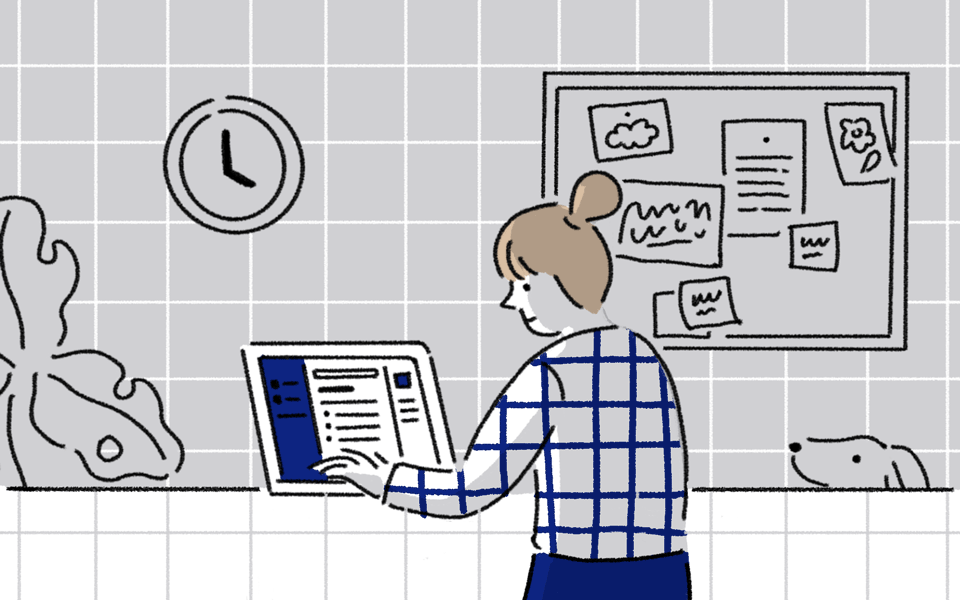
Setting up workers to succeed outside the office
To help reduce the spread of COVID-19, Dropbox has taken the precautionary step of asking all of our employees globally to work from home for the next two weeks. We want to prioritize the safety and health of our employees, their families and our community.
Even though we design tools to help distributed teams work from anywhere, it’s daunting to think of our team of nearly 3,000 being away from the office for more than a few days. Many of us are accustomed to occasional remote work, but a sudden shift to a fully distributed work environment brings unique challenges. We're all in uncharted territory.
The question is: How do we keep work moving forward and stay aligned, engaged, and motivated when we're not able to be in the same physical space? We recognize that many industries and individuals won’t have the option to work remotely. We're fortunate to be in an industry where much of our work can continue through online collaboration. FAST goals help our teams manage objectives, so even when working remotely our goals are aligned. And we've been focused on building a smart workspace to solve the kind of problems distributed teams face every day.
So we wanted to share our own plans in the hope that it might be helpful to others who are adjusting to working outside the office. Our IT team’s goal is to maintain as much continuity with our normal working culture as possible within this new world of distributed work. Our philosophy to accomplish this is a balance between trust in our employees, a frictionless technology experience so they can keep projects moving forward, and security to protect our IP. Here’s what we’re prioritizing to prepare ourselves for this new challenge.
Ensuring a secure work environment for distributed teams
There are a number of best practices that go into creating a network that balances security and ease-of-use when everyone is working from home. Many of these have already been in place at Dropbox, but some workers may have to learn to use some new tools, and IT teams may have to establish new support systems.
- VPN: We restrict access to some of our most sensitive data on an internal private network. In this case a VPN, or Virtual Private Network, allows our workers to access that information securely even when working from home or on a public WiFi connection at a café. Logging on to VPN might be an extra step workers need to get used to, but it’s worth the effort.
- 2FA: Multi-factor authentication apps such as DUO, Authy or Google Authenticator allow our workers to verify their identity before accessing applications and sensitive logins.
- Password manager: We set up password managers like 1Password or LastPass, and ask employees to install the software on all devices where our teams might need to access work. This makes it easier for our workers to access the different logins they use for work, no matter what computer they’re on.
- We require device management software on mobile devices that will access our services to make sure they are secure and up to date.
- We’ve reminded everyone to bring home essential accessories, including a laptop charger, keyboard, mouse, multi-adapter dongle, and headphones for video conference meetings.
- Last, it’s critical to develop processes for remote support. That includes re-thinking onboarding and offboarding, addressing hardware needs, and considering remote desktop takeover software for IT support. It’s crucial not to take these processes for granted—they must be enabled remotely to keep business functioning.
Using collaboration tools to keep work moving forward
Cloud collaboration tools are a big part of how many people work every day, but in a fully distributed workforce, they’re that much more critical.
- File sync and share: One benefit of having all your work in the cloud is that you can access everything no matter where you’re working, on any device. (Not surprisingly, we use Dropbox.) This is especially useful when you need to vacate the office unexpectedly. As a matter of practice we make sure any local files are synced before leaving the office, and we reminded everyone to do so before leaving to work from home.
- Cloud docs for real-time collaboration: Inviting team members into shared docs where they can work together in real-time helps us keep everyone on the same page. Commenting directly on content gives team members more context for feedback, reduces the likelihood of miscommunication, and cuts down on unnecessary email and chat.
- Project management and coordination: Using online collaboration tools, we create project plans, to-do lists, tasks and timelines, and track progress in a single doc. In the absence of in-person meetings or being able to stop by a colleague’s desk, these become essential to staying organized and making progress. We also reduce friction between tools with digital workspaces where we can access all the apps we use in one place.
- Align on communication channels for both company-wide and individual communication so everyone knows where to find updates and stay in sync. Different people and teams have different preferences, so it’s important to clarify expectations.
- Video conferencing: Tools like Zoom help us facilitate real-time conversations for one-on-ones, group meetings, or all-hands sessions to help people stay connected even when they’re working from home.
Encouraging behaviors that build trust
Even though we’ll be working with the same people on the same tasks, it may take some time to get comfortable with the quirks of virtual teamwork. Here are some of the guidelines we’re adopting to try to have a smooth ride together.
- Schedule regular check-ins. We’ll establish a cadence of regular 1:1 meetings and adjust the frequency as necessary. We may find that we need to meet more often when working remotely than we did in person.
- Over-communicate. Without hallway conversations and status meetings, it’s easy to miss new decisions and status updates. We think most people would rather be contacted across multiple channels than feel out of the loop. So we’re planning to communicate more than we would under normal circumstances. We’ll also try to be extra mindful of stakeholders we might be forgetting to include because we haven’t seen them around.
- Keep an open mind on time. While we expect to maintain productivity levels, we’re anticipating some employees’ working hours may shift without the office serving to set the rhythm of a 9-5 workday. Working from home may impact child care and other responsibilities in ways that shift some employees’ most productive working hours. We encourage everyone to adopt behaviors that enable their best work, and to respect colleagues’ needs when collaborating on projects.
- Communicate business continuity plans. We’re providing employees with crucial information and specific actions to take in the event of an emergency.
We'll be developing more resources as we adapt to the new reality of distributed work. We’ll update this post soon with details about what we're learning along the way. To learn how Dropbox can help teams stay organized no matter where they're working, check out How Dropbox can support distributed work.


